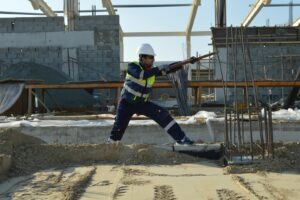
Photo Credit – CobBauge
A project to build a new generation of ‘cob’ houses, which are believed to be more energy efficient than traditional bricks and mortar buildings, will continue for four more years following €4m of funding.
Cob is a mixture of earth, water and fibres like straw and hemp and has the potential to bring substantial reductions in carbon dioxide (CO2) emissions and construction waste compared to conventional masonry materials, as it is made with soil sourced from the building site.
Cob walls can be shaped in ways impossible to achieve with conventional materials, meaning that they are suitable for a wide range of different roofing systems and interior designs.
However, traditional cob, which has been used for houses and other buildings across the south west of England and northern France for centuries, does not comply with the most up-to-date thermal building regulations.
Hudson Architects, a UK practice based in Norwich and London with expertise in innovative design, will pilot the use and assessment of the new cob material at a site in this country.
The contemporary new building will have a counterpart in France, designed by Francois Streiff at PnrMCB.
The new homes will be occupied and monitored for energy use, thermal conditions and indoor air quality – allowing comparisons with equivalent, conventionally-constructed homes.
Occupants will get an early taste of the advantages of living in a cob home, which architects say are low energy bills, a comfortable environment and low levels of interior air pollutants.
The University of Plymouth’s Professor Steve Goodhew is leading the project which is called CobBauge. He said: ‘With CobBauge, we are addressing head on the need for affordable, sustainable, energy efficient dwellings.
‘We believe cob has clear advantages over other materials in terms of the energy needed to construct it and bring it to site, and the construction of these homes will also make use of the traditional skills of small businesses and tradesmen in areas where cob has historically been used.’
















Leave a Reply